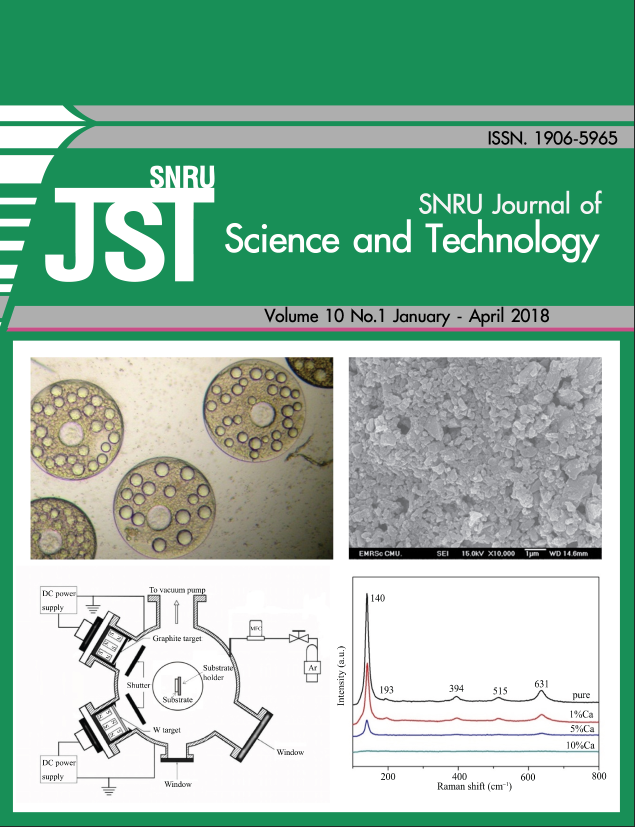A Comparison of Protein Extraction Methods from Protease Treated Rubber Particles Suitable for 2-Dimensional Electrophoresis Study of Allergic Proteins
Keywords:
protease, Bacillus subtilis, extraction solution, rubber, Hevea brasiliensis, 2-DE, LC-MS/MSAbstract
Some proteins in latex products may cause allergic reactions to human. This research was to investigate protein profiling in Hevea brasiliensis clone RRIM 600 rubber particles. Protease from Bacillus subtilis MR10 and non-protease treated rubber particles were prepared from seven-year old rubber trees to evaluate proteomics by using two-dimensional electrophoresis (2-DE) analysis in IPG pH 3 – 10, 7 cm and 12.50% gel conditions with silver staining. There were three protein extraction methods, first method (50 mM HEPES-Tris pH 7.60), second method (0.50 % SDS) and third method (0.10 % SDS and 50 mM Tris-HCl pH 6.80). Results showed that three extraction methods in non-protease treated rubber were estimated to 20 spots (22-175 kDa, pI 3-9), 40 spots (22-175 kDa, pI 4-10) and 200 spots (14-95 kDa, pI 3-9), respectively and protease treated rubber were estimated to 10 spots (42-175 kDa, pI 4-7), 30 spots (22-175 kDa, pI 4-7) and 160 spots (14-95 kDa, pI 3-10), respectively. Thus, protease treatment could decrease some proteins in rubber particle and third method was suitable protein extraction procedure because of highest protein expression. Protein identification in some spots on Coomassie brilliant blue R-250 staining of this extraction method with liquid chromatography-tandem mass spectrometry (LC-MS MS–1) was also found four allergenic proteins (allergen Hev b 7, putative latex allergen Hev b 7.02, Hev 2.20 and small rubber particle protein Hev 3, respectively) on latex protein.








